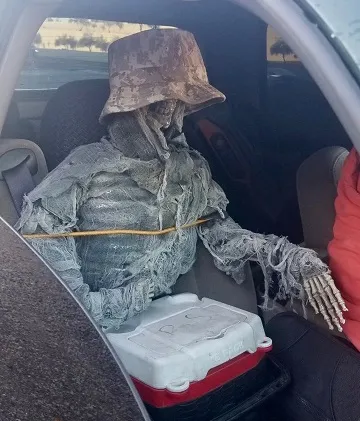
Arizona Department of Public Safety (ADPS) revealed that one of its officers has issued a ticket to a 62-year-old man who was illegally using a Phoenix high occupancy vehicle (HOV) lane.
In itself this is not particularly unusual. HOV lanes are a fixture on routes which are prone to congestion and it is far from unknown for devious, lone commuters to position shop window dummies in their passenger seats to beat the system. But it is uncommon for someone to try the same thing with a skeleton as a co-driver.
The bare bones of the matter are these: the offence took place on Arizona State Route 101 near Apache Blvd in Phoenix. The skeleton, shrouded in Halloween cobwebs and topped with a battered camouflage hat, was propped up in a bid to circumvent the forces of law enforcement.
ADPS saw straight through the ploy. Using the hashtags ‘NiceTry’ and ‘YoureNotHeMan’, the organisation tweeted: “Think you can use the HOV lane with Skeletor riding shotgun? You’re dead wrong!”
A less than amused ADPS spokesman told ITS International: “What we would add is that this behaviour is not only illegal, it is also a disservice to all other motorist that are attempting to do the right thing.”









